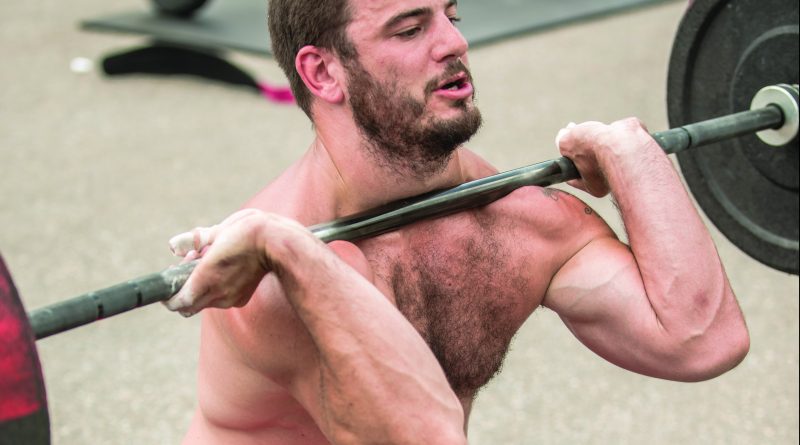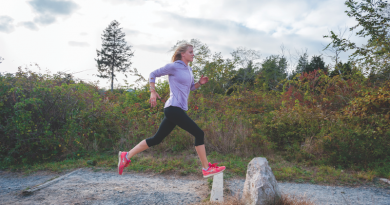Mat Fraser’s 5 Essential Moves
For a total workout, you can find a CrossFit program near you. Or, according to Mat Fraser, you can also keep it simple by building your own routine with these five classic moves.
When Greg Glassman—a cyclist, gymnast and weightlifter—wanted to start a jack-of-all-trades-type program that enabled athletes to become well-rounded and physically prepared for anything life might bring, he founded CrossFit. Sixteen years later, the program is wildly popular. More than 7,000 gyms exist across the country, including 11 in Vermont. (For a list, see the course finder map on www.crossfit.com.)
CrossFit encourages members to build 10 particular physical qualities: strength, stamina, cardiovascular/respiratory endurance, flexibility, power, speed, coordination, balance, accuracy and agility. The program includes weightlifting, sprinting and gymnastics, and other key high-intensity regimens that vary depending on the day. Using consistent variables, such as specific distances, movements, and weights, the CrossFit program strives to produce measurable results.
CrossFit’s “WOD,” or workout of the day, is completely scalable depending on fitness level. In other words, a workout might call for squats with 135-pound weights. If that’s too easy, or too hard, you can scale as needed. The WOD can be found on CrossFit’s website and in classes at the nearest box.
But if you want to set up your own workout program, Mat Fraser recommends these five moves. You can tailor the speed and number of repetitions to your fitness level.
Beau Teal, head coach and owner of Burlington CrossFit, says it’s less about the number of repetitions, and more about the stimulus and the load. “There’s no formula or perfect way to do it,” he says.
For an efficient workout, set a time limit and choose two of the exercises below—for example, pull-ups and squats. Paying attention to form, switch off between, say, 15 pull-ups and 15 squats, or as many you can within the set amount of time. Make sure your heart rate is elevated and you’re feeling the burn. —E.C.
THE SQUAT: “Every girl wants to look good in a pair of jeans. Every guy wants to look like the linebacker. Some of those people are running 5Ks to try to get in shape and it’s like, ‘No, that’s not giving you the results you want. How ‘bout a squat?’”—Mat Fraser.
In a perfect squat, the athlete’s feet are shoulder-width apart, the back is straight, and the knees should align over the toes. The hips should extend just below the knees when the squat is complete. Squats build your leg muscles, including your quads, hamstrings and calves.
THE BURPEE: “It’s a full-body workout. It doesn’t matter how good a shape you’re in. If they’re easy, go faster.”—M.F.
Start your burpee in a squat position. In one motion, move into a squat-thrust by placing your hands on the ground, shoulder-width apart in front of you, then kick your feet straight out behind you to nish in a plank position. Bend your elbows and bring your chest to the oor in a push-up position. Jump your legs forward into a frog position. Jump upright. Then squat to repeat. Burpees help athletes maintain arm strength, core strength, leg strength, endurance, coordination and explosiveness.
THE DEADLIFT: “They’re so simple that they get overlooked, but the results are incredible. I’ve seen gym members who are 75, 80 years old, and they deadlift. We have guys in the back room who are pulling five or six hundred pounds, and you can just scale it.”—M.F.
Approach the bar with your feet shoulder- width apart. Set your hips backward while keeping a small arch in your lower back (this is important to prevent injury). Bend your knees until your hands can grip the bar. Keep your head angled so that you’re looking 5-10 feet in front of you to prevent neck strain. Inhale deeply and straighten your legs to stand with the bar, then exhale. Bend the knees and hips to lower the bar to the ground once again. Done correctly, the deadlift will strengthen the back muscles, glutes, core muscles, leg muscles, forearms and shoulders.
THE PULL-UP: “My dad does pull-ups standing on a band that has 100 pounds of tension on it, so he does pull-ups with half his body weight. For me, I might strap some plates on to add weight. You can do chest-to-bar pull-ups or regular pull- ups—and scale as needed.”—M.F.
While pull-ups come in many variations that work di erent muscle groups, the most basic form will give you a great back workout. Find the right grip width by pointing your elbows out to the side (not forward, but along the same plane as your chest) and keeping your forearms straight . Keeping your shoulders down and back and your elbows to the side, hoist yourself up until your eyes are level with the bar. Then, lower yourself (but not enough that you’re hanging from the bar) using only arm strength. Keep your lats activated, then pull upwards again.
THE PUSH-UP: “It’s simple, and it gets overlooked and gives you results.” —M.F.
Start your push-up with hands at shoulder width apart, planted rmly below your shoulders. Good push-up form requires your neck and head to stay in line with your torso, your shoulders back and your back straight. Lower your chest to about an inch above the ground, then use your whole range of motion to push yourself up. Push-ups activate your chest, shoulders, triceps and help stabilize your core.



Pingback: Sleep: The 2nd Most Powerful Fitness Tool — Vermont Sports Magazine